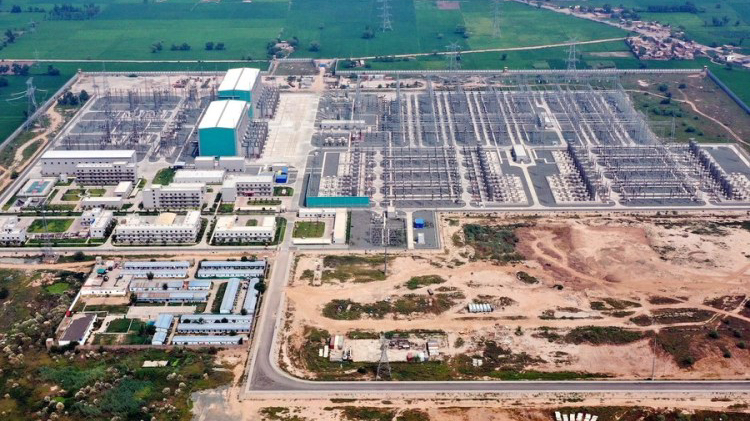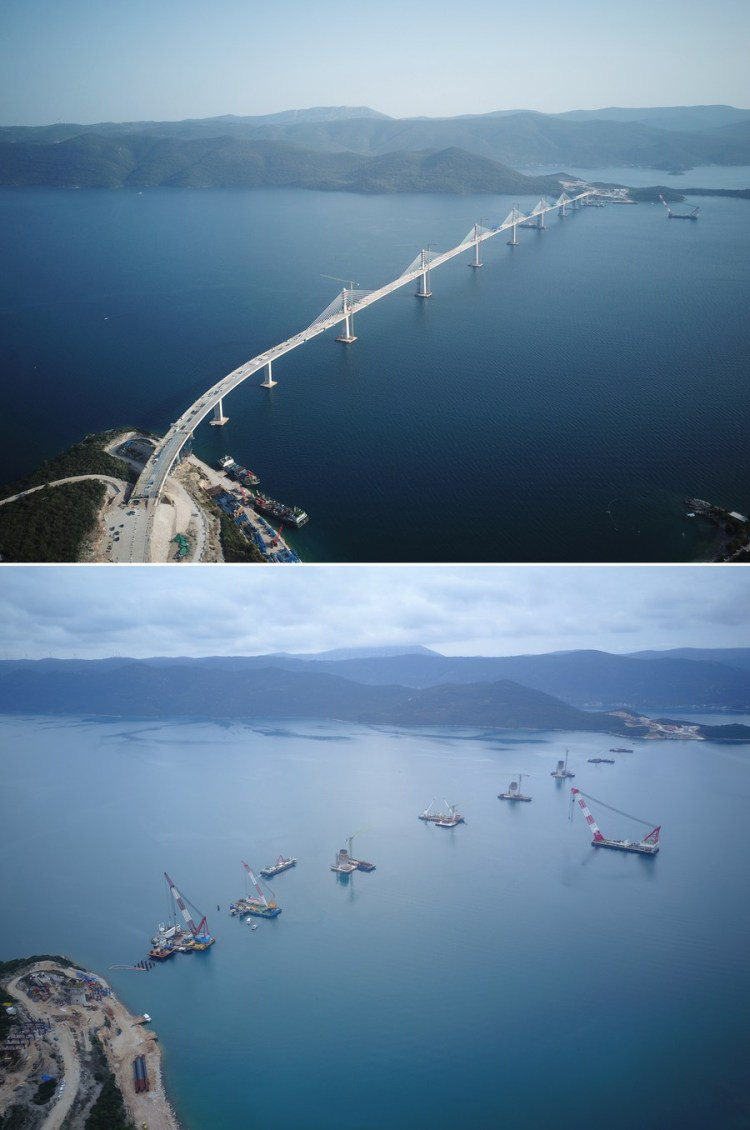
A view of the Lahore Converter Station of the ±660kV Matiari-Lahore high-voltage direct current (HVDC) transmission line project under the China-Pakistan Economic Corridor (CPEC) on the outskirts of Lahore, in Pakistan's eastern Punjab province, September 6, 2021. /Xinhua
A view of the Lahore Converter Station of the ±660kV Matiari-Lahore high-voltage direct current (HVDC) transmission line project under the China-Pakistan Economic Corridor (CPEC) on the outskirts of Lahore, in Pakistan's eastern Punjab province, September 6, 2021. /Xinhua
Editor's note: March 2023 marks the 10th anniversary when the concept of "community with a shared future for mankind" was first introduced by China. To commemorate this occasion, CGTN is working with the Institute for a Community with Shared Future from Communication University of China, to invite researchers specialized in the field from around the world to contribute their visions. Khalid Taimur Akram is the executive director of the Pakistan Research Center for a Community with Shared Future, Islamabad. The article reflects the author's views and not necessarily those of CGTN.
China will mark its 10th anniversary for the "community with a shared future for mankind" concept put forward by Chinese President Xi Jinping in Moscow on March 23, 2013. He proposed joint efforts to build a global community for a common destiny. Xi's vision was people-centered. He also wanted prosperity for all humanity, and every country should shoulder its responsibility for inclusive development. The primary goals of the vision are to provide grounds for an open, inclusive, clean and beautiful world with security and shared joy. Moreover, this concept raised questions about how the world could act in turbulent times and how the blocs can avoid fragmentation. The shared future for all humanity stresses the "joint efforts" to face the challenges and security and development issues.
With the responsibility and foresight of a politician and strategist, Chinese President Xi Jinping grasps the laws of global development, ponders the future and destiny of humanity, and puts forward the concept of building a community with a shared future for mankind to maintain world peace and promote joint development.
The vision is to have close cooperation with different countries and regions, for example, Asia, Asia-pacific, Africa, Arab States and Latin America multilaterally.
Unfortunately, there needs to be more trust between nations and countries. With widening geopolitical gaps and rampant unilateralism, the Cold War mentality can dominate again, and the world can face harsh ramifications. The 21st century challenges, such as energy and food security and climate change, are emerging.

Combo aerial photo shows the Peljesac Bridge after its final connection (up, taken on July 29, 2021) and during construction (down, taken on February 1, 2020) at Mali Ston Bay near Komarna of southern Croatia. /Xinhua
Combo aerial photo shows the Peljesac Bridge after its final connection (up, taken on July 29, 2021) and during construction (down, taken on February 1, 2020) at Mali Ston Bay near Komarna of southern Croatia. /Xinhua
Based on the core principles of partnership, security, growth, inter-civilization exchanges and a sound ecosystem, China has introduced a win-win model for the global community in this century through the Belt and Road Initiative (BRI). The BRI is all about inclusiveness. China believes no nation can solve its issues by living in isolation. The concept opposes hegemony in world affairs while building a shared future makes the core of the concept address the challenges of security and development faced by humankind.
The vision revolves around the central idea that all the stakeholders in their respective fields worldwide should work together for shared prosperity.
In regards to cooperation, the China-Pakistan Economic Corridor (CPEC) is a solid example. The enhancement of geographical linkages has improved road, rail and air transportation systems with frequent and free exchanges and enhanced people-to-people contacts, promoting understanding through academic, cultural interactions, the activity of higher volume of flow of trade and businesses. Enhancement of cooperation by the win-win model will result in the well-connected and integrated region of shared destiny, harmony and development.
China has introduced solar system technology, and now households in Pakistan can use this facility. Under the umbrella of the Chinese development program, the CPEC is significant for the development of the region. The project aims to achieve significant potential in regional connectivity, diverse investment opportunities, financial cooperation, socio-economic development, poverty alleviation, education, and medical treatment, and thus improving security and stability of the region.
President Xi's vision of a shared future for humanity stresses sovereign equality, dialogue and coordination. Sovereign equality has been an essential criterion for regulating the relationship between states for hundreds of years. All countries, big or small, strong or weak, rich or poor, are equal. The development path chosen by different countries should be respected, and interference in the internal affairs of other countries should be opposed. Dialogue and consultation are effective strategies for resolving differences.
(If you want to contribute and have specific expertise, please contact us at opinions@cgtn.com. Follow @thouse_opinions on Twitter to discover the latest commentaries in the CGTN Opinion Section.)